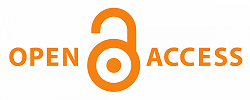JUXTAPOSING 21ST CENTURY SKILLS COMPETENCY BASE READINESS: FOR A PROPOSAL STUDENT TEACHER TRAINING PROGRAM
Abstract
Pre-service teaching is the preparation stage for future teachers, which is necessary for every profession. It is not only to mold the skills of teachers but including the future of every country. Their competencies based on the 21st Century Philippine Professional Standards skills (Critical Thinking, Collaboration, Creativity and Innovation, and Communication) are evaluated. Their level of Competency-Based Teaching Readiness in different categories (Content Knowledge and Pedagogy, Learning Environment and Diversity, Curriculum and Planning, and Assessment and Reporting) are measured. Quantitative correlation is used as the methodology to determine the significant relationship between 21st century and competency-based- teaching readiness and the significant difference in Competency-Based Teaching Readiness of Pre-service Teachers when grouped according to their field and academic performance in professional education. The study presents whether Competency- Based Teaching Readiness is influenced depending on the participant's field of specialization and academic performance. One of the findings showed that there is a highly significant and positive relationship between 21st Century Philippine Professional Standards’ skills and Competency-Based Teaching Readiness. There is a Direct proportion of results as the higher the competency, the more equipped the pre-service teachers pinpointed. For the recommendation, the researchers formulated and drafted an interactive event that would help the pre-service teachers broaden their perspective on the importance of competency and acquiring the necessary skills in teaching. Progressive efforts in the training systems shall be made to ensure that adequate skills to teach the current and future generations are acquired.
References
[2] Harun, A. S., & Abdul Samat, N. (2021). Teaching Literature among Pre- Service Teachers: Challenges and Solutions. LSP International Journal, 8(1), 95–103. https://doi.org/10.11113/ lspi.v8.17182
[3] DepEd Order No. 42, series 2017: National Adoption and Implementation of The Philippine Professional Standards for Teachers | Teacher Education Council. (n.d.). Retrieved from http://tec.deped.gov.ph/o rder/national-adoption- and-implementation-of- the-philippine- professional-standards- for-teachers/
[4] Creswell JW, & Plano Clark VL (2018).Quantitative correlation
[5] Buchner, A., Erdfelder, E., &Faul, F. (1996). Teststärkeanalysen [Power analyses]. In E. Erdfelder, R. Mausfeld, T. Meiser, & G. Rudinger (Eds.), Handbuch Quantitative Methoden [Handbook of quantitative methods] (pp. 123–136).





